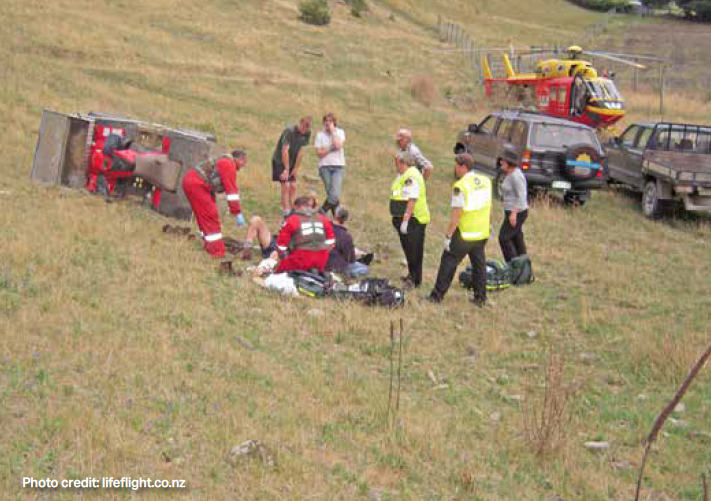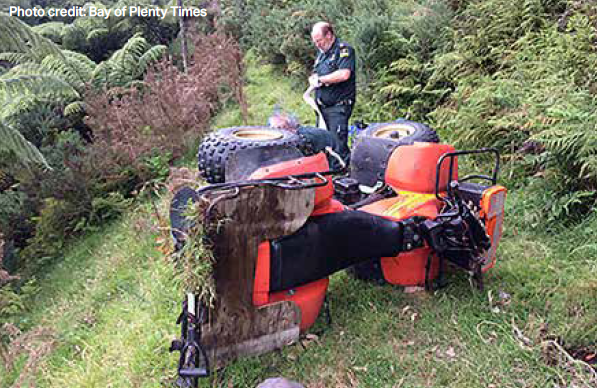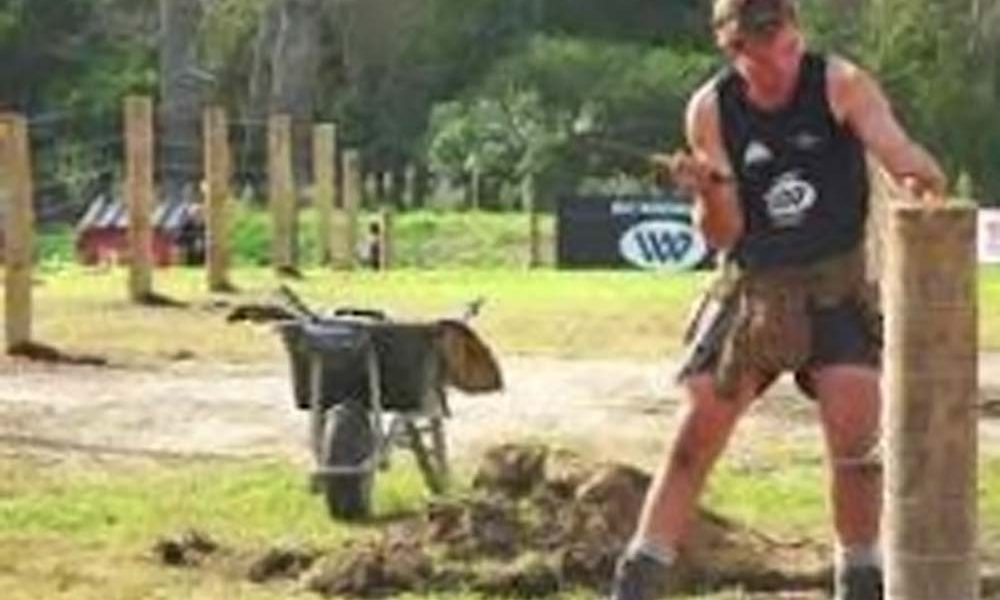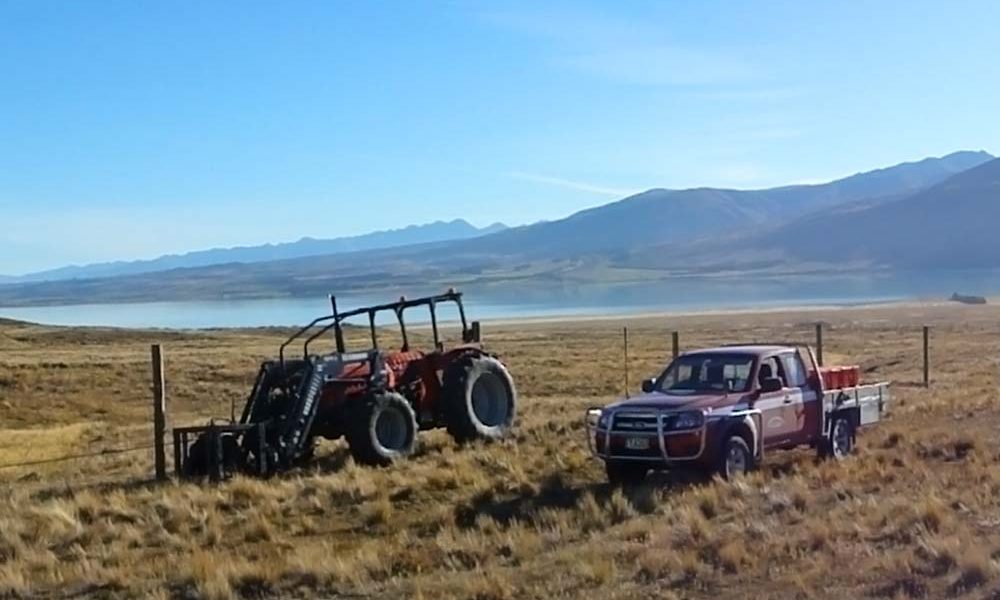
In rural New Zealand, quad bikes and side-by-sides (SxS) are invaluable tools for fencing work. They offer mobility and efficiency across challenging terrains. However, their use comes with significant risks that need to be managed to ensure safety.
Setting the scene
Imagine a typical day on a New Zealand farm. You’re tasked with repairing and installing fences across hilly, uneven terrain. The quad bike or SxS is loaded with fencing gear, including posts, wire, and tools. The landscape is rugged, with steep slopes, loose gravel, and hidden obstacles.
Risks involved
Terrain hazards: The uneven and often slippery terrain can cause vehicles to tip over or lose control. Steep slopes and hidden obstacles like rocks or holes increase the risk of accidents. Complete a risk assessment on the day.
Load management: Carrying heavy or unbalanced loads can affect the stability of the vehicle, making it more prone to tipping. Can you move material a different way or with a different vehicle?
Weather conditions: Adverse weather, such as rain or fog, can reduce visibility and make the ground more treacherous, slippery, with hard to see hazards. Rushing in wet conditions can lead to incidents occurring.
Operator fatigue: Long hours of operation can lead to fatigue, reducing the operator’s reaction time and increasing the likelihood of mistakes.
Controls and safety measures
Training and competency: Ensure all operators are trained and competent in handling quad bikes and SxS. This includes understanding the vehicle’s limits and how to navigate difficult terrain. Look for reputable companies that offer specialised training programs for bike use.
Protective gear: Always wear appropriate protective gear, including helmets, gloves, and sturdy footwear. Helmets are crucial in preventing head injuries. In New Zealand, approved motorbike helmets must comply with either the New Zealand Standard NZS 5430 or one of several recognised international standards: UN/ECE Regulation No. 22, Australian Standard AS 1698, Snell Memorial Foundation, or Federal Motor Vehicle Safety Standard No. 218. Look for helmets with certifications from DOT, ECE, or SNELL.
Vehicle maintenance: Regularly check and maintain vehicles to ensure they are in good working condition. This includes checking tyre pressure, brakes, and throttle. Basic maintenance tasks like oil changes are essential.
“ We know life is busy for farmers, but there’s no excuse for letting your quad bike maintenance slide – especially when the consequences can be catastrophic. Ideally maintenance checks are done by a mechanic”
Load securing: Properly secure all loads to prevent shifting during transit. Use appropriate straps and ensure the load is balanced.
Route planning: Plan routes in advance, avoiding the most hazardous areas when possible. Walk new routes to identify and mitigate potential hazards.
Weather monitoring: Keep an eye on weather forecasts and avoid operating in extreme conditions. If caught in bad weather, find a safe place to wait it out.
Rest breaks: Schedule regular breaks to prevent fatigue. Ensure operators are well-rested before starting their tasks.
Stop safely: Ensure that the vehicle is safely stopped, and the brakes are fully engaged before getting off.
Seek assistance: Don’t be afraid to seek assistance when you need to – neighbouring farmers are usually more than willing to lend a hand.
Care and maintenance
Regular inspections: Conduct regular inspections of your quad bike or SxS. Check for any signs of wear and tear, and address issues promptly to prevent breakdowns.
Oil changes: Keep up with regular oil changes as specified in the owner’s manual. Using the correct oil and filter is crucial for engine longevity.
Fuel management: Use fuel stabilisers if the vehicle will be stored for an extended period. This prevents fuel from breaking down and clogging the fuel system.
Battery care: Ensure the battery is charged and in good condition. Regularly check the terminals for corrosion and clean them as needed.
Common maintenance mistakes
Neglecting regular oil changes: Some operators believe oil changes are only necessary once a year. However, quad bikes and SxS often operate in harsh conditions, requiring more frequent oil changes.
Ignoring air filter maintenance: The air filter can quickly become clogged, especially in dusty environments. Failing to clean or replace it regularly can lead to engine damage.
Overlooking tyre pressure: Incorrect tyre pressure can affect handling and increase the risk of accidents. Both over inflated and under-inflated tyres can lead to uneven wear and reduced traction.
Skipping battery maintenance: Neglecting the battery can result in starting issues. Regularly check the battery’s connections and use a maintainer during periods of inactivity.
Infrequent greasing: Failing to grease pivot points and bearings can lead to premature wear and tear. Regular greasing is essential for smooth operation.
Effects of weights carried
Stability and control: Carrying heavy or unbalanced loads can significantly affect the stability and control of quad bikes and SxS. Extra weight can alter the centre of gravity, making the vehicle more prone to tipping, especially on slopes.
Steering and braking: Additional weight can impact steering and braking performance. Heavier loads require more force to stop and can make steering less responsive.
Load limits: Always adhere to the manufacturer’s recommended load limits. Overloading can strain the vehicle’s suspension and brakes, leading to mechanical failures.
Securing loads: Ensure that all loads are securely fastened and evenly distributed. Unsecured or uneven loads can shift during transit, further compromising stability.
Fatality statistics in New Zealand
The use of quad bikes and SxS in rural New Zealand has unfortunately led to numerous fatalities.
- From January 2006 to April 2023, there were 69 confirmed workplace fatalities involving quad bikes.
- In 2024 alone, there were several quad bike and SxS incidents, including multiple fatalities due to quad bike and SxS rollovers.
- The majority of these incidents occurred in the agriculture sector, highlighting the risks associated with using these vehicles in rural environments.
Safety measures to reduce fatalities
Crush Protection Devices (CPDs): Installing CPDs on quad bikes can prevent serious injuries or fatalities in the event of a rollover. These devices help keep the vehicle from crushing the operator.
Regular training: Continuous training ensures that operators remain aware of the latest safety practices and are competent in handling their vehicles. Refresher courses can help reinforce safe driving habits.
Risk assessments: Conduct thorough risk assessments before using quad bikes or SxS. Evaluate the terrain, weather conditions, and the nature of the tasks to identify potential hazards.
Speed control: Encourage operators to drive at safe speeds, especially on uneven or unfamiliar terrain. Excessive speed is a common factor in many quad bike accidents.
Passenger restrictions: Avoid carrying passengers on quad bikes unless the vehicle is specifically designed for it. Extra weight can affect the balance and control of the vehicle.
Emergency preparedness: Equip vehicles with emergency kits, including first aid supplies, communication devices, and tools for minor repairs. Ensure operators know how to use these items in case of an emergency.
Age restrictions for operating quad bikes and side-by-sides (SxS):
- Quad bikes: Children under 12 years of age should not drive a quad bike. Additionally, riders under 16 years of age should not operate adult-sized quad bikes.
- Side-by-Sides (SxS): For SxS vehicles, it is generally recommended that individuals are 16 years or older, and that only individuals who are mature enough and have received proper training should operate these vehicles. Ensuring that young riders are appropriately supervised and trained is crucial for their safety.
Using quad bikes and SxS for fencing in rural New Zealand can greatly enhance efficiency, but it’s essential to manage the associated risks. By implementing proper training, maintenance, and safety measures, you can ensure a safer working environment.
Stay vigilant, stay safe, and make the most of these versatile vehicles in your fencing operations.
Best regards,
Deb and the RuralSafe Team

Published in WIRED issue 77/June 2025 by Fencing Contractors Association NZ
You may also like: Health and safety pre-start for plant and machinery
Read WIRED online
Follow us on Facebook
© Fencing Contractors Association NZ (FCANZ)





